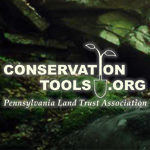Webinar: Millions, Billions, Trillions: Do you have the tools to keep new trees alive?
Overview of the Healthy Trees Healthy Cities initiative and free tree app for volunteers.
The most important canopy to consider is the one you’ve already got!

The latest national assessment shows that on the whole we are losing more tree canopy than we are gaining. Tree canopy is lost each year due to development, storms, pests and diseases, utility line clearing, natural mortality, and other factors. Although some of this loss is unavoidable, communities can take steps to protect their canopy and promote its long-term health.
Sustainable local programs are needed to conserve and manage the urban forest over time using tools such as policy and ordinances, urban forest management plans, dedicated funding and staffing, Tree Boards/Commissions where applicable, and diverse public-private partnerships.
What works in your community? We are compiling case studies on ordinances and funding strategies that are good models for other communities – send us your examples!



Overview of the Healthy Trees Healthy Cities initiative and free tree app for volunteers.
Courses from the Municipal Online Stormwater Training Center on Urban Forestry funding.
A webinar on new standard protocols and effective strategies for tree data collection to support adaptive management.
Provides citizens, professionals, and elected officials with information they can use to craft tree ordinances for their communities.
Learn how you can support trees where you live, work, and play using the Healthy Trees, Healthy Cities Mobile app.
Full webinar for Addressing Loss of Tree Cover in Urban Watersheds: The Importance of Local Codes and Policies.
A multinational effort to bring you the latest information about emerald ash borer.
A guide on using recovered and fresh-cut urban wood to build and sustain vibrant communities. Laid out in four different phases that cover the why, how, goals, and returns of urban wood use.
This guidebook covers strategies to fund a local urban forestry program, funding sources, and opportunities to reduce program costs. From the University of Maryland and Alliance for the Chesapeake Bay.
To maximize tree canopy in its neighborhoods, Charlottesville’s in-depth plan provides an effective method for consistent funding and tree maintenance.
Montgomery County is enhancing its tree canopy and mitigating environmental impacts of development with new legislation.
Nationwide, over 3,400 towns have received their Tree City USA recognition and take pride in this distinction. In the Chesapeake Bay Watershed, there were over 130 recognized towns and cities recognized by this program in 2016.
This handbook is designed to help urban forest managers assess their urban forest, identify issues and opportunities, and chart a path toward long-term sustainability.
This publication by the Penn State Extension details how preconstruction activities, tree inventories, repairing tree injury, and post-construction activities can help preserve trees in development projects.
Colleen Kenny, a forester with the Maryland Forest Service, and Paula Shrewsbury, a professor at the University of Maryland, talk about the efforts being used to slow down the emerald ash borer, an invasive species killing ash trees.
In Pennsylvania, the state equips communities affected by Emerald Ash Borer (EAB) with the capacity and tools needed to gather data on their EAB infestation and ash trees.
This unique online, 8-course training will help you learn more about trees, about people, and about serving in a citizen advisory role in your city, town, or village.
The Healthy Trees, Healthy Cities Initiative has a portfolio of forest health-related resources that have been compiled for you to view or download for educational uses.
This manual presents specific ways to enable developers, engineers, or landscape architects to incorporate more trees into a development site and introduces conceptual designs for storm water treatment practices that utilize trees as part of the design.